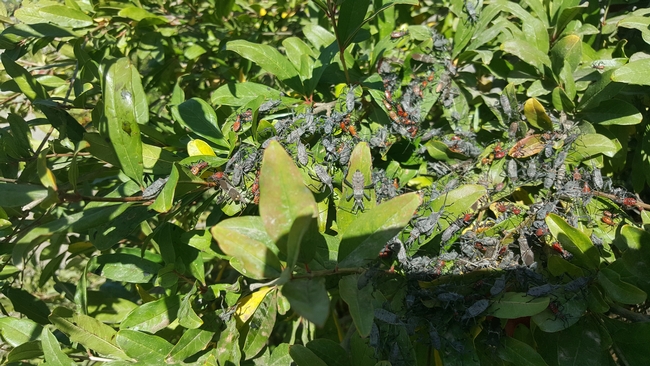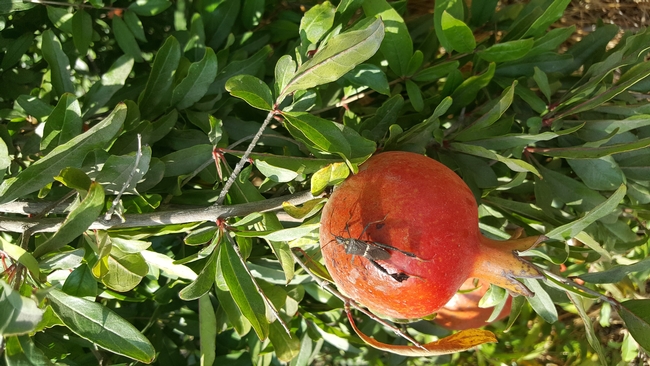0University of California Cooperative Extension Area-wide IPM Advisor, Kearney Agricultural Research and Extension Center, Parlier, CA
Leaffooted Bug Populations in Ventura County - 2017
Cold winter temperatures can reduce populations of leaffooted bug, Leptoglossus zonatus (Dallas), by ~50 to 80%. But unfortunately, it takes a cold year much like occurred in January of 2007 when daytime temperatures remained low and nighttime temperatures reached about 20° F for several hours. In other words, ouch for the citrus crop. Fall and winter temperatures of 2016 / 2017 were ideal for leaffooted bug and the 2017 growing season started out with large populations. I need to add that we do not fully understand if the wet winter positively affected populations - it certainly did not have a negative impact. Moreover, it appears that leaffooted bug populations going into later 2017 will be very large.
Monitoring and managing leaffooted bug presents an IPM challenge. In the fall between September and mid-November, the species produces a full generation; certainly, on pomegranate and although I have not observed it, also on desert willow. In most years, adults move from those host plants by late December to protected overwintering sites such as Mediterranean fan palm and Italian cypress trees; and perhaps citrus. In early March leaffooted bug leave overwintering sites to feed on what happens to be available at the time. In the San Joaquin Valley and the Sacramento Valley region it is almonds and pistachio. In other parts of California, where those nut crops are not available, citrus may be an important host crop. In Louisiana, for instance L. zonatus can cause considerable economic damage on satsuma mandarins, however in California the species has not been reported as a serious pest on any of the citrus cultivars.
The IPM challenge is that we do not have an effective monitoring tool to detect the bug when they leave overwintering sites. And moreover, once leaffooted bug is detected, no economic threshold exists , and pyrethroids offer the best management option – not necessarily the best IPM option.
Given the importance of pomegranate in the life cycle of leaffooted bug, PCAs and growers need to concentrate monitoring efforts on that crop during September through October, especially focusing on unmanaged orchards and hedgerows. If populations are found they will consist mainly of immature stages and there are two management options, clothianidin and pyrethrins. The caveat is that those compounds have only contact activity; coverage must be good and the insecticides will likely not have a great impact on adults because they will spook and fly away before being sprayed. Two organic compounds, pyrethrin (PyGanic) and Beauveria bassiana Strain GHA (BotaniGard) can also be effective. But again, those compounds have no residual activity so the spray must contact the bugs to be effective.
Insecticide use should occur only if monitoring indicates the presence of leaffooted bug and/or its feeding damage. Apply insecticides only after considering the potential risks of the compound to beneficial organisms, including bees and biological control agents, and to air or water quality. For more information on these topics please consult the UC IPM Pest Management Guidelines for Almonds at http://ucipm.ucanr.edu > Agricultural pests > Almond
(Ben: This insect became prominent in Ventura in 2015. Kris was minding his own business when he saw this bug traveling at 50 mph down the road.
//ucanr.edu/blogs/blogcore/postdetail.cfm?postnum=19184)
|
Fig. 1. Aggregation of leaffooted by on pomegranate in early October of 2016. The aggregation is comprised mostly of fifth instar. |
|
Fig. 2. Adult leaffooted bug on pomegranate in Ventura County, September 8, 2017. |

